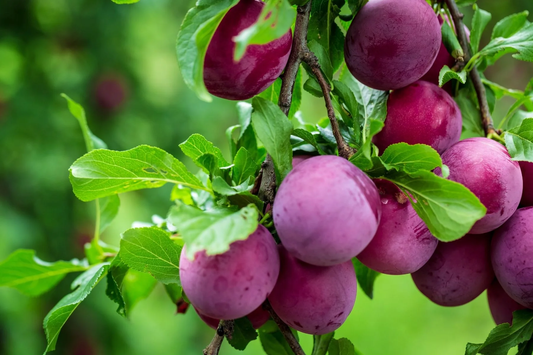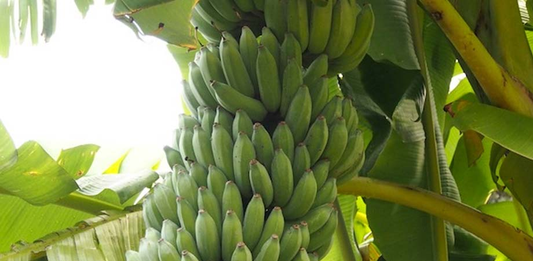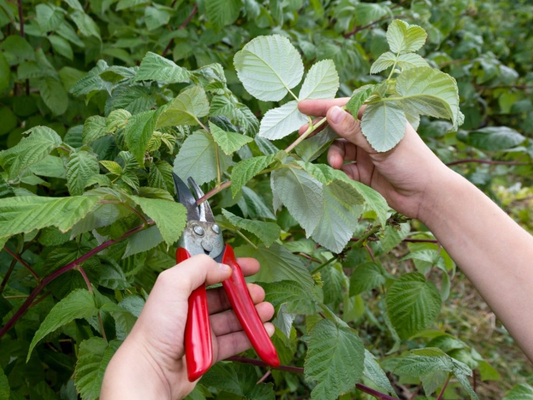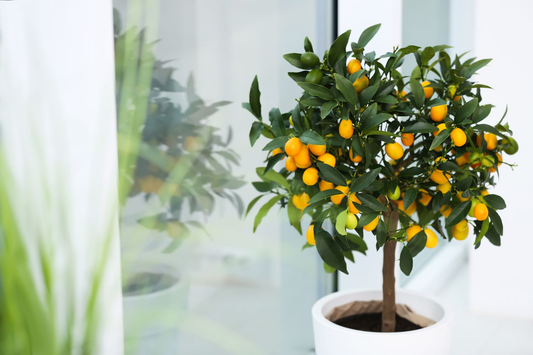How to Care for Spider Plants
Share
- 1. Introduction
- 2. Understanding Spider Plants
- 3. Best Conditions for Spider Plants
- 4. Watering and Feeding Your Spider Plant
- 5. Potting and Repotting Spider Plants
- 6. Propagating Spider Plants
- 7. Common Problems and How to Fix Them
- 8. Pruning and Maintenance
- 9. Spider Plant Varieties
- 10. Troubleshooting Spider Plant Issues
- 11. Benefits of Keeping Spider Plants
- 12. Frequently Asked Questions (FAQ)
1. Introduction
Spider Plants (Chlorophytum comosum) are among the most popular and beloved houseplants, known for their striking appearance and easy care. These resilient plants are native to South Africa but have become a staple in households around the world. Spider Plants are often recommended to beginner gardeners due to their low-maintenance nature and adaptability to a wide range of environments.
Here’s why Spider Plants are so popular:
- Beginner-friendly: Spider Plants are incredibly easy to grow and maintain, making them ideal for novice gardeners and plant enthusiasts.
- Resilient: These plants thrive in various lighting and temperature conditions, making them adaptable to different home environments.
- Low-maintenance: Spider Plants do not require frequent attention, making them perfect for people with busy lifestyles or those new to plant care.
There are also many benefits to keeping a Spider Plant in your home, including:
- Air purification: Spider Plants are known for their ability to filter indoor air, removing toxins and improving overall air quality. This makes them an excellent choice for bedrooms, living rooms, or offices.
- Stress reduction: Having plants in your home has been linked to reduced stress levels, and the Spider Plant’s lush green foliage contributes to a calming atmosphere.
- Easy to propagate: Spider Plants can be easily propagated by their “babies” or plantlets, which can be shared with friends or grown into new plants.
- Pet-friendly: Spider Plants are non-toxic to pets, making them a safe addition to homes with cats and dogs.
With their attractive appearance, health benefits, and simple care routine, Spider Plants are a fantastic addition to any home.

2. Understanding Spider Plants
Description of the Plant: Spider Plants (Chlorophytum comosum) are known for their long, narrow, arching green leaves that have a characteristic white or yellow stripe running down the center. The plant has a rosette-like appearance, and as it matures, it sends out long stems called "runners," which produce smaller plantlets or "babies." These plantlets dangle from the runners and resemble the shape of a spider, which is where the plant gets its name.
Size and Growth Habits: Spider Plants are typically small to medium-sized houseplants. In their natural environment, they can grow up to 2 feet in height, but as houseplants, they tend to remain more compact, around 12-18 inches tall. Their leaves can extend from 6 to 12 inches long, giving the plant a bushy, attractive appearance. Spider Plants are known for their vigorous growth, producing a number of plantlets that help them spread. These plants are non-flowering and reproduce asexually through their plantlets, which can be propagated easily.
History and Origin of Spider Plants: Native to tropical and southern Africa, Spider Plants have been a popular indoor plant for decades. They were first discovered in the 18th century and gained popularity in the 1900s as people began to appreciate their air-purifying qualities and resilience in low-light conditions. Spider Plants were introduced to Western homes as ornamental houseplants due to their ability to thrive in a variety of conditions, making them an easy choice for home gardeners.
Why Spider Plants Are Loved: Spider Plants are loved by gardeners and houseplant enthusiasts for their:
- Low-maintenance nature: Spider Plants are easy to care for, making them perfect for beginners.
- Attractive appearance: The long, arching leaves create a beautiful, cascading effect, perfect for hanging baskets or shelves.
- Air-purifying qualities: Known to remove toxins like formaldehyde and benzene from the air, they help improve indoor air quality.
- Resilience: These plants are able to tolerate a variety of conditions, making them a popular choice for homes, offices, and public spaces.
3. Best Conditions for Spider Plants
Light: Spider Plants thrive in bright, indirect light, making them ideal for windowsills with filtered sunlight. While they can tolerate lower light conditions, their growth may slow down, and the plant may become leggy, with fewer plantlets. Too much direct sunlight can scorch the leaves, causing brown tips. For the healthiest Spider Plant, place it in an area where it receives ample natural light without being exposed to harsh, direct sunlight.
Temperature: Spider Plants prefer a moderate temperature range of 60-80°F (16-27°C). They are not frost-tolerant and should be kept away from cold drafts, air conditioners, or heaters. If exposed to temperatures below 50°F (10°C), the plant can suffer damage, and its growth may be stunted. During colder months, it’s important to maintain consistent temperatures within this range to ensure optimal health. Spider Plants can adapt to both warm indoor temperatures and slightly cooler areas, but they do best in a stable, comfortable environment.
Humidity: Spider Plants do well in normal household humidity, typically ranging from 40% to 60%. They are quite adaptable to varying humidity levels, but if the air in your home is too dry (especially in winter when heating systems are on), the plant may experience brown tips on its leaves. To maintain a healthy humidity level, you can occasionally mist the plant or place a small humidifier nearby. If your Spider Plant is in a particularly dry room, such as a kitchen or office with air conditioning, consider increasing the humidity slightly to keep the plant thriving.
Soil: The best soil for Spider Plants is a well-draining, lightweight potting mix. A general-purpose potting soil with good aeration is ideal, but adding some perlite or sand to the mix can improve drainage. Spider Plants do not like sitting in waterlogged soil, so it's crucial to ensure the pot has proper drainage holes to prevent root rot. A slightly acidic to neutral pH (between 6.0 and 7.0) is most suitable for these plants. Avoid overly heavy or compact soil types, as they can impede water flow and harm the plant's roots.

4. Watering and Feeding Your Spider Plant
Watering Frequency: Spider Plants prefer to be watered thoroughly but only when the top inch or two of soil feels dry. To avoid overwatering, it's essential to let the soil dry out between waterings. A general rule of thumb is to water your Spider Plant every 1-2 weeks, depending on the temperature, humidity, and the size of the plant. During warmer months, you may need to water more frequently, while in the cooler months, watering may be less often. It's better to underwater than overwater, as Spider Plants are more tolerant of dry conditions than they are of waterlogged roots.
Signs of Overwatering or Underwatering: It's important to recognize the symptoms of both overwatering and underwatering so you can adjust your care accordingly:
- Overwatering: Yellowing leaves, wilting, and root rot are common signs. If the plant sits in soggy soil for too long, its roots may start to decay, leading to mushy stems and unhealthy growth.
- Underwatering: Brown tips, dry and crispy leaves, and generally drooping or shriveled appearance are common signs of underwatering. The soil will feel dry to the touch, and the plant may show signs of stress.
Fertilizing: Spider Plants are relatively low feeders, but occasional fertilizing can help promote healthy growth. You can use a balanced, water-soluble fertilizer with equal parts nitrogen, phosphorus, and potassium (such as 10-10-10). It’s best to fertilize during the active growing season, typically in spring and summer, and reduce feeding during the fall and winter months when the plant is in a dormant phase. Fertilize once a month, diluting the fertilizer to half-strength to avoid burning the roots. Organic fertilizers or slow-release pellets can also be used for a more gradual nutrient release.
Seasonal Adjustments: During the growing season (spring and summer), your Spider Plant will need more frequent watering and feeding to support its growth. In the cooler months (fall and winter), the plant’s growth slows down, so you can reduce both watering and fertilizing. Water less often, ensuring the soil is mostly dry between waterings, and skip fertilizing until the plant starts actively growing again in spring. This seasonal adjustment helps prevent overwatering and allows the plant to rest during dormancy.
5. Potting and Repotting Spider Plants
Choosing the Right Pot: Selecting the correct pot is essential for the health of your Spider Plant. Here’s what to consider when choosing a pot:
- Size: Choose a pot that is 1-2 inches larger in diameter than the current pot. Spider Plants prefer to be slightly root-bound but still need some room for growth. Avoid pots that are too large, as they may retain too much moisture, leading to root rot.
- Drainage: Ensure the pot has drainage holes to allow excess water to escape. Spider Plants do not like sitting in waterlogged soil, so proper drainage is key to preventing root rot.
- Material: Pots made from breathable materials like terracotta or clay are ideal as they help with moisture control and allow air to reach the roots. Plastic pots retain moisture for longer but can still work well as long as they have proper drainage.
Repotting Needs: Spider Plants generally need to be repotted every 1-2 years to accommodate their growth. Over time, the plant’s roots will outgrow the pot, and it’s essential to provide more space for healthy development. Repotting also refreshes the soil, which can become compacted and lose its nutrients. When repotting, use fresh, well-draining potting mix, and ensure the new pot has proper drainage.
Signs It’s Time to Repot: Here are some indicators that your Spider Plant may need repotting:
- Root-bound: If the roots start growing out of the drainage holes or circling around the bottom of the pot, it’s time to repot.
- Slow growth: If the plant is not growing as vigorously as before, it may be outgrowing its current pot and needs more space.
- Soil degradation: If the soil is compacted, doesn’t drain well, or has become depleted of nutrients, it’s time for a refresh.
- Water retention issues: If the soil takes too long to dry out, it may indicate that the roots are overcrowded and need more room to breathe.

6. Propagating Spider Plants
How to Propagate Spider Plants from Plantlets: One of the easiest and most common ways to propagate Spider Plants is through the small offshoots, or plantlets, that grow on long stems. These plantlets have tiny roots that can develop into new, fully independent plants. To propagate, simply remove the plantlets from the main plant, ensuring you leave a small portion of the stem attached. These plantlets can then be rooted in water or soil, both of which offer excellent results.
Best Time for Propagation: The best time to propagate Spider Plants is during the growing season, typically in the spring or early summer. During this period, the plant is actively growing and can better support the propagation process. Propagating in the warmer months allows the plantlets to establish roots more quickly and helps the new plants grow more vigorously.
Step-by-Step Guide for Propagation: Here’s a simple guide to propagate your Spider Plant from plantlets:
- Step 1: Choose a healthy plantlet with visible roots. You can either leave the plantlet attached to the mother plant or gently cut it off using sterilized scissors.
- Step 2: Place the plantlet in water, ensuring the roots are submerged but not the leaves. If you’re propagating multiple plantlets, make sure they have enough space in the container.
- Step 3: Place the water-filled container in a bright, indirect light location. Change the water every few days to keep it fresh and encourage root growth.
- Step 4: After a few weeks, once the roots are well-established, you can plant the new plantlet in a small pot with well-draining potting soil.
- Step 5: Water the new plantlet thoroughly and treat it like a mature Spider Plant, ensuring it gets bright, indirect light and the right watering conditions.
Alternative Methods (e.g., from Cuttings in Water): In addition to propagating from plantlets, you can also propagate Spider Plants by taking cuttings of the stem with small plantlets or baby leaves. Cut the stem just below the plantlet and place it in water, allowing roots to develop. Once the roots are about 1-2 inches long, transfer the cutting into soil, and treat it as a new plant.
7. Common Problems and How to Fix Them
Yellowing Leaves: Yellowing leaves can be a common problem for Spider Plants, and several factors can contribute to this issue:
- Overwatering: When the roots sit in waterlogged soil, they can begin to rot, causing the leaves to yellow. To fix this, make sure the pot has adequate drainage and only water the plant when the soil is dry.
- Underwatering: If you’re not watering your Spider Plant enough, the leaves may turn yellow as the plant becomes stressed. Ensure you’re giving the plant a thorough watering when needed.
- Low Light: Spider Plants may suffer from yellowing leaves if they’re not getting enough bright, indirect light. Move the plant to a brighter spot to see improvement.
Brown Tips on Leaves: Brown tips are another common issue that can be caused by several factors:
- Low humidity: Spider Plants prefer moderate to high humidity. If the air is too dry, the tips of the leaves may dry out and turn brown. To remedy this, consider placing your plant on a humidity tray or misting it occasionally.
- Inconsistent watering: Alternating between too dry and too wet soil can cause stress on the plant, leading to brown tips. Try to water consistently and allow the top layer of soil to dry out between waterings.
- Fertilizer burn: Over-fertilizing or using a fertilizer that is too strong can lead to brown tips. Always dilute the fertilizer and avoid overfeeding.
Pests: While Spider Plants are relatively pest-resistant, they can still attract common houseplant pests. Here are a few to watch out for:
- Spider Mites: These tiny pests leave speckled, discolored spots on leaves. To control them, wipe the leaves with a damp cloth or spray the plant with insecticidal soap.
- Aphids: Aphids are small, soft-bodied insects that suck sap from the plant, causing distorted or yellowing leaves. To remove them, spray the plant with a mixture of water and dish soap or use a neem oil solution.
- Mealybugs: Mealybugs leave cotton-like masses on the plant and can weaken its overall health. Remove them by dabbing a cotton swab soaked in rubbing alcohol on the affected areas.
Leggy Growth: If your Spider Plant is growing tall and thin, with fewer leaves and more stems, it may be experiencing leggy growth. The main causes and solutions include:
- Low Light: Spider Plants need bright, indirect light to grow healthily. If they are placed in a low-light area, they may become leggy. Move the plant to a brighter location to encourage fuller, bushier growth.
- Too much fertilizing: Excessive fertilization can cause leggy growth as the plant prioritizes elongating over producing leaves. Reduce fertilizing and focus on maintaining a healthy balance of light and water.
- Improper watering: Both overwatering and underwatering can stress the plant and lead to leggy growth. Ensure you are watering the plant when the soil is dry but not soggy.

8. Pruning and Maintenance
How and When to Prune Spider Plants: Pruning Spider Plants is essential to keep them looking their best and to encourage healthy growth. It helps prevent overcrowding and keeps the plant from becoming leggy. Pruning should be done regularly to remove any damaged or old leaves, as well as to trim back any long stems or runners that may have become too unruly.
- Timing: The best time to prune your Spider Plant is during the growing season, which is typically in the spring and summer. However, pruning can also be done at any time throughout the year as needed to maintain the plant’s appearance.
- Tools: Use sharp, clean scissors or pruning shears to make clean cuts and prevent damage to the plant. Make sure your tools are sanitized before use to avoid transferring any diseases.
Trimming Dead or Damaged Leaves: Over time, some leaves may become yellow, brown, or damaged. To maintain a healthy-looking plant, it’s essential to remove these leaves. Follow these steps:
- Identify leaves that are yellowed, brown, or damaged beyond repair.
- Use sharp scissors to trim the affected leaves at the base, close to the soil, or as close to the stem as possible.
- Dispose of the cut leaves to prevent any potential pests or diseases from spreading.
Cleaning the Plant: Regular cleaning is important to keep your Spider Plant thriving. Dust can accumulate on the leaves, which can block sunlight and reduce the plant's ability to photosynthesize. To clean your Spider Plant:
- Wipe the leaves: Use a soft cloth or sponge to gently wipe the leaves with warm water. If the leaves are particularly dusty, you can add a small amount of mild soap to the water, ensuring that you wipe away any excess soap afterward.
- Shower the plant: Alternatively, you can take the plant to a sink or shower and gently rinse it with lukewarm water to remove dust and debris. Ensure the plant is well-drained afterward to prevent overwatering.
9. Spider Plant Varieties
Common Varieties: Spider Plants come in a few different varieties, each with its own distinct characteristics. The two most common varieties are:
- Regular Green Spider Plant: This variety is characterized by long, narrow green leaves that grow in an arching pattern. It’s the most traditional version of the plant.
- Variegated Spider Plant (Chlorophytum comosum 'Variegatum'): The variegated variety has green leaves with creamy white or yellow stripes running down the center of each leaf. This variety offers a more decorative appearance, with a striking contrast in color.
Differences Between Varieties: While both varieties are part of the same species, there are notable differences:
- Leaf Color: The regular green variety has solid green leaves, while the variegated variety features a mix of green and white or yellow stripes.
- Size: The variegated variety tends to have slightly smaller leaves than the regular green variety, though both can grow to a similar height.
- Shape: The leaves of the regular green variety are more uniform in shape, whereas the variegated variety often has slightly more irregular or wavy edges due to the variation in color.
Pros and Cons of Different Varieties:
| Variety | Pros | Cons |
|---|---|---|
| Regular Green Spider Plant | Classic look, easy to care for, hardier. | Lacks the striking color contrast of variegated variety. |
| Variegated Spider Plant | Visually striking with its colorful foliage. | More sensitive to low light and care requirements, slightly smaller leaves. |
10. Troubleshooting Spider Plant Issues
Drooping Leaves: Causes and Solutions: Drooping leaves can be a sign that your Spider Plant is stressed. There are several possible reasons for drooping:
- Overwatering: If you’re watering too much, the roots may become waterlogged, leading to drooping leaves. Solution: Ensure the soil is well-drained and allow it to dry out between waterings.
- Underwatering: On the flip side, not watering enough can also cause leaves to droop. Solution: Water the plant thoroughly when the top inch of soil is dry to the touch.
- Low light: If your Spider Plant isn’t getting enough light, it may begin to droop. Solution: Move your plant to a location with bright, indirect light.
Spindly Growth: Why It Happens and How to Fix It: Spindly or leggy growth occurs when your Spider Plant isn’t receiving the right amount of light or care. Common causes include:
- Low light: If your plant is not getting enough light, it will grow tall and thin in search of sunlight. Solution: Place your Spider Plant in a location where it receives bright, indirect light.
- Too much nitrogen: Excessive fertilizer, particularly one high in nitrogen, can cause spindly growth. Solution: Reduce the frequency of fertilizing and switch to a balanced fertilizer.
Slow Growth: How to Encourage Faster Growth: If your Spider Plant is growing slowly, consider these possible solutions:
- Light: Spider Plants thrive in bright, indirect light. If your plant is in a low-light area, it may be growing slowly. Solution: Move the plant to a brighter spot.
- Temperature: Spider Plants prefer a temperature range of 60-80°F (16-27°C). If the temperature is too low, growth may slow. Solution: Keep your plant in a warm, comfortable environment.
- Soil quality: Poor soil can hinder growth. Solution: Ensure your Spider Plant is in well-draining, nutrient-rich soil to encourage healthy growth.

11. Benefits of Keeping Spider Plants
Health Benefits: Spider Plants are more than just beautiful additions to your home—they also offer significant health benefits:
- Air Purification: Spider Plants are known for their ability to purify the air. They can help remove harmful toxins like formaldehyde and xylene from the air, making your indoor environment cleaner and healthier to breathe.
- Stress Relief: Being around plants has been shown to reduce stress levels. Spider Plants, in particular, with their lush green foliage, contribute to a calming atmosphere, helping to lower anxiety and improve overall mental well-being.
Decorative Appeal: Spider Plants are incredibly versatile in home décor. Their cascading, arching leaves create a lovely, natural aesthetic. Here are a few reasons they are great for decorating:
- Easy to incorporate into any space: Whether in a hanging basket, on a shelf, or as part of a tabletop display, Spider Plants can thrive in various environments, making them suitable for all room types.
- Adaptable to different décor styles: From modern to boho to minimalist, Spider Plants add a touch of greenery that complements any interior design style.
Pet-Friendly Characteristics: One of the best features of Spider Plants is that they are non-toxic to pets, including cats and dogs. This makes them a safe choice for households with furry friends who may be prone to nibbling on plants. While Spider Plants are harmless, it’s still important to monitor pets to avoid excessive chewing, which can cause mild stomach upset.
12. Frequently Asked Questions (FAQ)
How often should I water my Spider Plant?
Spider Plants prefer to dry out between waterings. Typically, you should water them once the top inch of the soil feels dry to the touch. During warmer months, you may need to water more frequently, but in cooler months, reduce watering to avoid overwatering.
Why are my Spider Plant’s leaves turning yellow?
Yellowing leaves can be caused by several factors:
- Overwatering: Too much water can lead to root rot, which causes yellowing leaves.
- Underwatering: If the plant is left dry for too long, the leaves can turn yellow as well.
- Lack of nutrients: Spider Plants may show yellowing leaves if they haven’t been fertilized in a while.
To fix this, adjust your watering schedule and consider using a balanced fertilizer.
Can I keep my Spider Plant outside?
Yes, you can keep your Spider Plant outside in warm climates (temperatures above 60°F/16°C). Just ensure it is placed in a shaded spot, as direct sunlight can scorch the leaves. Bring the plant inside if the temperatures drop below 50°F (10°C).
Why does my Spider Plant have brown tips?
Brown tips can result from:
- Low humidity: Spider Plants prefer higher humidity levels.
- Fluoride sensitivity: Fluoride in tap water can cause brown tips.
- Overwatering or underwatering: Both extremes can cause the tips of the leaves to brown.
Try increasing humidity, using distilled water, or adjusting your watering habits to correct this issue.
What’s the best way to propagate my Spider Plant?
The best way to propagate a Spider Plant is by using the plantlets that grow on long stems. Simply cut the plantlet and place it in water until roots develop, then transplant it into soil. Alternatively, you can plant the offsets directly in soil and wait for them to root.




